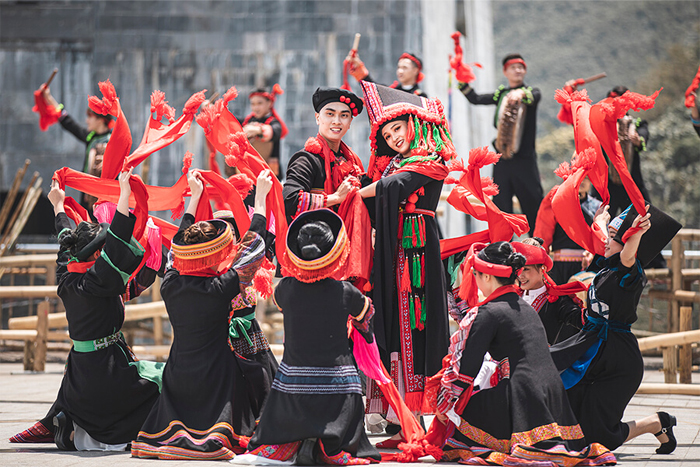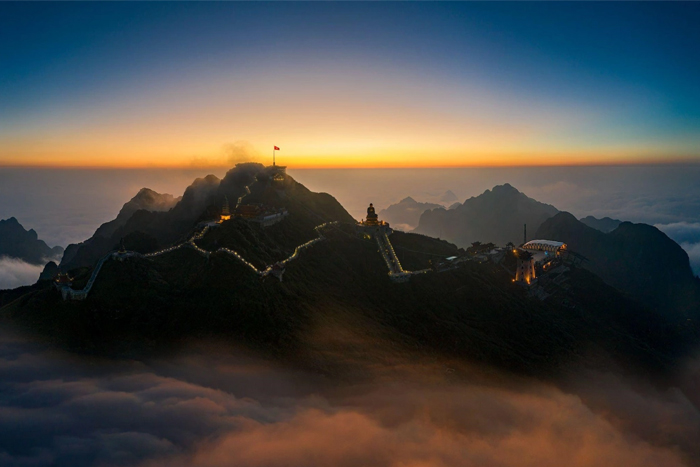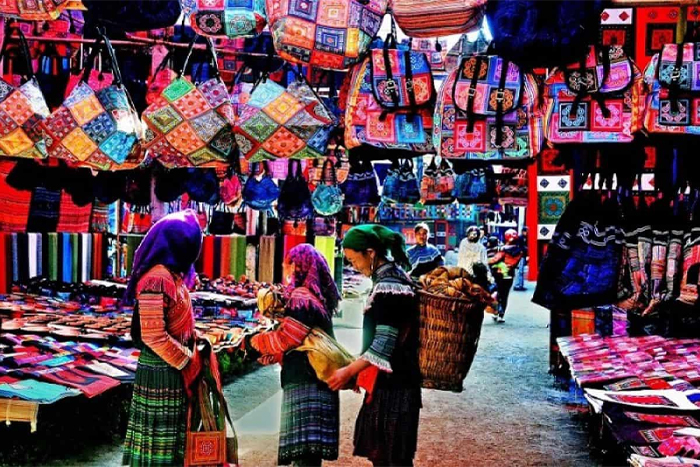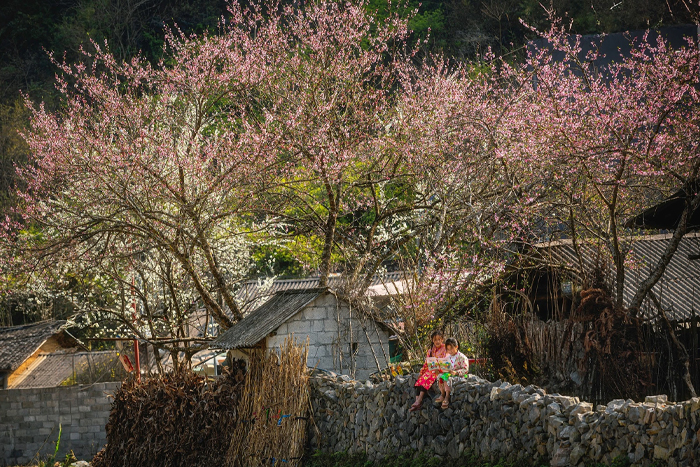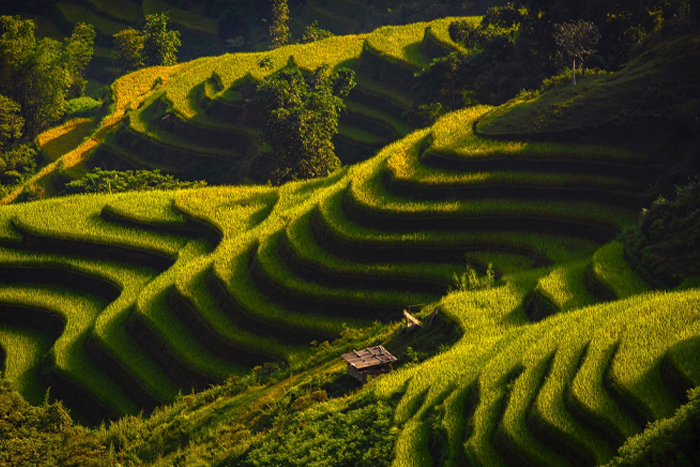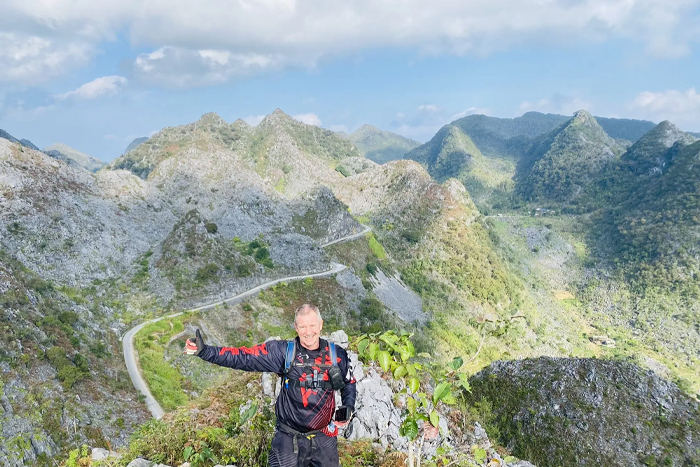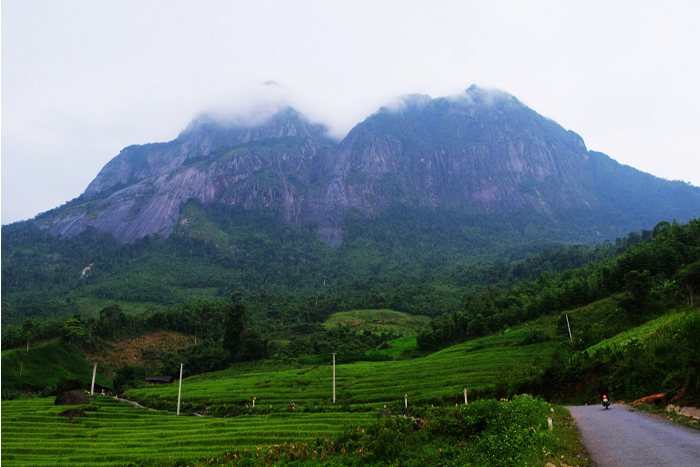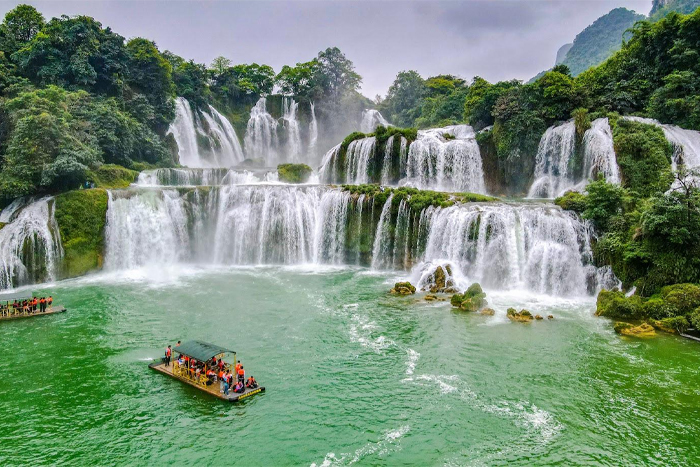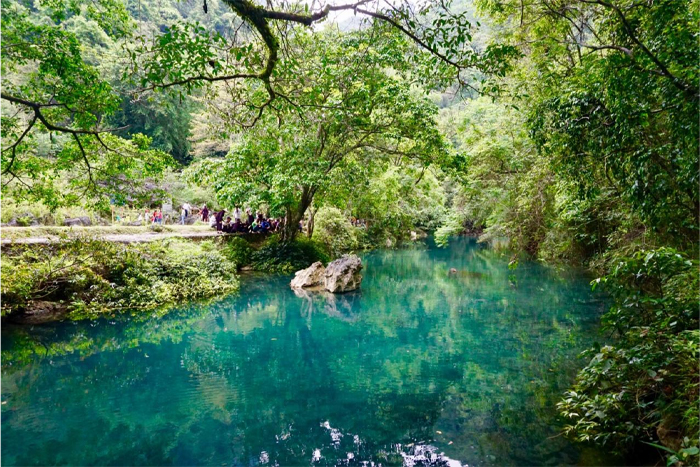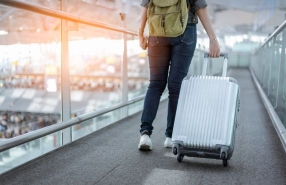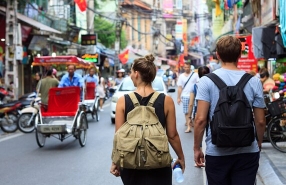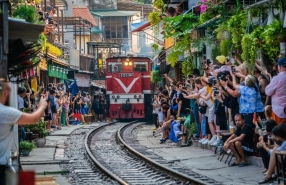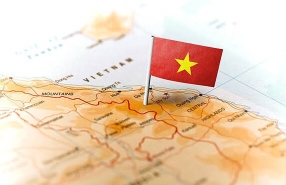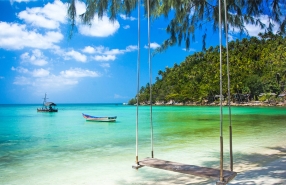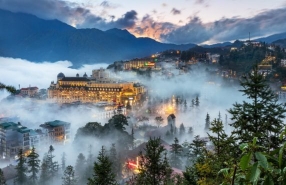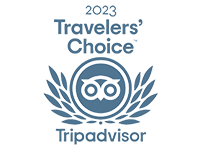Do you have 10 days to travel in Vietnam? Are you looking to explore Northern Vietnam but haven’t found a suitable itinerary yet? If so, this 10-day trip to Sapa Bac Ha Ha Giang Cao Bang may be exactly what you need. It will take you from the misty town of Sapa to the colorful markets of Bac Ha, across the majestic limestone landscapes of Ha Giang, and all the way to the stunning Ban Gioc Waterfall in Cao Bang. Whether you are a nature enthusiast, a cultural traveler, or simply someone who wants to experience the very best of the north, this route offers a well-balanced and unforgettable North Vietnam trip. It’s your perfect guide for spending 10 days in North Vietnam covering both iconic highlights and hidden gems. Are you ready to explore the full north Vietnam itinerary for 10 days? Let the journey begin below!
Laetitia's Review:
I had an unforgettable 10-day journey through Northern Vietnam with Autour Asia. The 10-day trip to Sapa Bac Ha Ha Giang Cao Bang was incredibly well-designed, striking a perfect balance between iconic destinations like Sapa and Ban Gioc Waterfall, and hidden gems such as Hoang Su Phi and Nam Dam that I would have never discovered on my own. Our guide was outstanding deeply knowledgeable, caring, and always ready to share stories and insights that brought each place to life. I especially loved staying in local homestays, where I got to enjoy authentic, home-cooked meals and connect with local families. Everything was thoughtfully organized, from transport to accommodations, and I felt safe, inspired, and completely immersed in the culture. This wasn’t just a trip - it was a truly meaningful experience.
If you're looking for a well-crafted itinerary to explore Vietnam in an authentic, enriching way, I wholeheartedly recommend this itinerary with Autour Asia. They made my North Vietnam trip unforgettable and I’m sure they’ll do the same for you.
Here is our 10-day itinerary in Sapa Bac Ha Ha Giang Cao Bang:
1. Day 1: Hanoi to Sapa - Exploring the town
Your 10-day trip to Sapa Bac Ha Ha Giang Cao Bang begins in the early morning with a scenic 5 to 6-hour drive from Hanoi to Sapa, a charming mountain town nestled in the northern highlands. Upon arrival, check into your accommodation and take some time to rest. In the afternoon, begin your exploration with a leisurely walk through the town center. Visit the iconic Stone Church of Sapa, a remnant of French colonial architecture, and browse the bustling local market filled with ethnic minority crafts and fresh produce. You may also visit Love Market (if it’s the weekend), stroll around Sapa Lake, or try a herbal foot soak - a popular local remedy after long walks. In the evening, savor traditional dishes like “thắng cố” or grilled stream fish at a local restaurant. Overnight in Sapa. This marks the perfect start to your 10 days in North Vietnam.
2. Day 2: Fansipan Adventure - Transfer to Bac Ha
After breakfast, set out for a thrilling adventure to the "Roof of Indochina" - Mount Fansipan. Take the cable car up to the station near the summit, then ascend the final 600 steps to reach the peak, which offers breathtaking panoramic views. Along the way, enjoy spiritual landmarks such as the Great Buddha Statue and Truc Lam Zen Monastery. After descending, depart for Bac Ha, a quiet highland district known for its colorful ethnic markets and Hmong communities. The drive takes around 2 to 3 hours. Upon arrival, check in to a local guesthouse and enjoy a peaceful evening in this cultural enclave. You can also stroll through the town, visit Hoang A Tuong Palace, or enjoy a brief hike around nearby villages. Overnight in Bac Ha.
3. Day 3: Ethnic Market or Village Trek - Travel to Hoang Su Phi
Wake early to visit the Bac Ha Market (held on Sundays) or the nearby Can Cau Market (on Saturdays), depending on your travel date. These markets are among the most vibrant in northern Vietnam, where hill tribe communities such as the Flower Hmong, Tay, and Nung gather to trade goods and socialize. Don’t miss the opportunity to try local delicacies like corn wine and thắng cố, or shop for handmade textiles and silver jewelry.
If your visit does not fall on a market day, you can instead explore the rural villages surrounding Bac Ha, such as Ban Pho or Na Hoi, where you’ll encounter authentic local life, traditional stilt houses, and stunning views of plum orchards and rice fields. Another worthwhile option is a short trek to visit the Hoang A Tuong Palace, an old colonial mansion with unique Chinese and French architectural influences, followed by a hike to nearby viewpoints or waterfalls.
After the morning activity, continue your journey eastward to Hoang Su Phi, renowned for its mesmerizing rice terraces and off-the-beaten-track atmosphere. The drive may take 4–5 hours across winding mountain roads. Settle into a homestay in a traditional village and enjoy a locally-prepared dinner. Overnight in Hoang Su Phi.
4. Day 4: Trekking in Hoang Su Phi - Drive to Quan Ba
Spend the morning trekking through the lush rice terraces of Bản Luốc or Bản Phùng, where you’ll encounter locals working in the fields and children playing along narrow dirt paths. The scenery is particularly captivating in the harvest season. For photography enthusiasts, sunrise and sunset over the terraces offer magical lighting. After lunch, hit the road toward Quan Ba in Ha Giang province. On the way, you’ll pass through winding passes with sweeping views of valleys and limestone mountains. Arrive in Quan Ba and visit the Fairy Bosom twin hills and the Quan Ba Heaven Gate for a stunning sunset. You may also explore traditional craft villages such as weaving workshops or herbal medicine gardens in Nam Dam village. Enjoy a cozy stay at a traditional Dao homestay. Overnight in Quan Ba. An ideal stop for those curating a northern Vietnam itinerary with a focus on local life and nature.
5. Day 5: Discover the Dong Van Karst Plateau - Reach Dong Van Town
Depart for Dong Van via the spectacular Ha Giang Loop. Along the way, stop to admire the rocky landscapes of the Dong Van Karst Plateau, a UNESCO Global Geopark. Visit the H’mong King’s Palace (Dinh Vua Mèo) in the Sa Phin Valley, a historical residence showcasing the influence of Chinese and French styles. Next, explore the old village of Lung Cam with its earthen houses and photogenic alleyways. Optional activities include hiking near the Lung Cu Flag Tower, which marks the northernmost point of Vietnam, or visiting a local tea workshop. By late afternoon, arrive in Dong Van town and check into your hotel. You can take an evening stroll around the town square, often alive with local activities and traditional music. Overnight in Dong Van.
6. Day 6: Ma Pi Leng Pass - Meo Vac - Travel to Bao Lac (Cao Bang)
The sixth day of 10-day trip to Sapa Bac Ha Ha Giang Cao Bang begins with one of the most scenic drives in Vietnam. Depart Dong Van and ascend the legendary Ma Pi Leng Pass, which offers jaw-dropping views over the Nho Que River gorge. Take time to walk along the Sky Path or opt for a boat ride on the river below. Adventure-seekers can also try motorbiking along the pass or taking drone shots of the canyon.
Continue your descent into Meo Vac, then head southeast toward Bao Lac in Cao Bang province. The road is mountainous and remote, offering glimpses of untouched ethnic minority villages and dramatic landscapes. Along the way, you may stop to interact with local communities or enjoy a traditional lunch. Arrive in Bao Lac by evening and enjoy dinner and cultural exchange at a homestay. Overnight in Bao Lac.
7. Day 7: From Bao Lac to Cao Bang City
After breakfast, depart for the provincial capital of Cao Bang. En route, make stops at some Tay and Dao minority villages to learn about their weaving and farming practices. Optional detours include short hikes through forested paths, photo stops at karst mountain formations, or visiting a rural school or cultural house. The journey will take around 5–6 hours, winding through quiet, forested mountains. Upon arrival in Cao Bang city, settle into your accommodation and relax. You may explore the riverside promenade, sample street snacks, or try Cao Bang specialties. Overnight in Cao Bang.
8. Day 8: Ban Gioc Waterfall and Nguom Ngao Cave
Set out early for a full-day excursion to two of Cao Bang’s natural wonders. Your first stop is the majestic Ban Gioc Waterfall, located on the border with China. The thundering falls are among the largest in Southeast Asia and offer great photo opportunities. Take a bamboo raft ride to get closer to the falls or simply enjoy a picnic by the water. Next, visit the nearby Nguom Ngao Cave, a vast limestone grotto filled with striking stalactites and stalagmites. Local guides may share legends and geological facts along the walk. After exploring the cave’s depths, return to your accommodation for the evening. Depending on your preference, you can stay near the waterfall or head back to Cao Bang city for the night. For nature lovers, this is a highlight of any north Vietnam itinerary 10 days.
9. Day 9: Cao Bang to Hanoi - Scenic Drive Back
Begin your return journey to Hanoi after breakfast. The drive takes approximately 7–8 hours, passing through green valleys and peaceful villages. Stop for breaks at scenic viewpoints or local restaurants for a final taste of northern cuisine. If time permits, you may visit the historical site of Pac Bo Cave (where Ho Chi Minh once stayed) before leaving Cao Bang. Arrive in Hanoi in the late afternoon or evening, marking the end of your highland journey. Overnight in Hanoi (optional) or connect to your next destination.
10. Day 10: Departure
This final day can be used as a buffer or relaxation day in Hanoi. Depending on your schedule, you can stroll through the Old Quarter, visit Hoan Kiem Lake, explore the Temple of Literature, or shop for local souvenirs such as silk, coffee, or handicrafts. If you have a flight, arrange transportation to Noi Bai International Airport. End of trip.
This 10-day trip to Sapa Bac Ha Ha Giang Cao Bang is ideal for travelers planning a scenic, immersive, and culturally rich north Vietnam trip. Whether you seek mountain adventure, ethnic diversity, or natural wonders, this 10 days in North Vietnam itinerary has it all. So, are you ready to embark on your unforgettable north Vietnam travel experience? Use this itinerary as your roadmap and let Northern Vietnam surprise you, day after day.
If you're planning a trip to Vietnam and want a personalized, in-depth travel experience, don't hesitate to get in touch with
Autour Asia,
Vietnam tour agency.
Marc Perennez
5.0
Excellent
Are the ethnic markets in this itinerary open every day?
No, the ethnic markets mentioned in the itinerary such as Bac Ha Market and Can Cau Market are not open every day. Bac Ha Market takes place every Sunday, while Can Cau Market is held on Saturdays. These markets are important weekly gatherings for local ethnic groups like the Flower Hmong, Tay, and Nung, where they trade goods, socialize, and showcase traditional clothing.
If your travel dates don’t fall on a weekend, the itinerary includes alternative cultural activities such as visiting nearby villages like Ban Pho or Na Hoi, exploring Hoang A Tuong Palace, or trekking through local landscapes ensuring that your experience remains rich and immersive regardless of the day.
Virginie Jacques
5.0
Excellent
Is this itinerary suitable for families or solo travelers?
Yes, this 10-day itinerary is well-suited for both families and solo travelers. Families with older children will enjoy the balance of cultural experiences, nature exploration, and light adventure such as visiting local markets, trekking through terraced fields, and staying in welcoming homestays. For solo travelers, this route is not only safe and rewarding, but also ideal for deeper cultural connection. Solo travelers will be accompanied by a local guide throughout the trip, ensuring smooth logistics, added safety, and a more immersive experience in each destination.
Maurice Bricoux
5.0
Excellent
What is the best time to do this 10-day Northern Vietnam trip?
The best time to do this 10-day trip to Sapa Bac Ha Ha Giang Cao Bang is from September to November and March to May. During these months, the weather is typically dry, cool, and comfortable, making it ideal for trekking, sightseeing, and photography. September and October are especially stunning, as this is when the rice terraces in Sapa and Hoang Su Phi turn golden during harvest season. Meanwhile, springtime (March to May) brings lush greenery, blooming flowers, and vibrant ethnic festivals. Avoid the peak rainy season (June to August), as roads in mountainous areas can become slippery or difficult to navigate.

